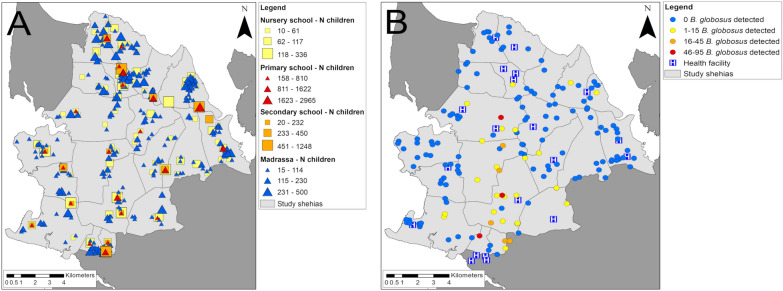Fig. 1.
Schools, human water contact sites (HWCSs) and health facilities in the study area in Pemba, Tanzania. A The type and geolocations of schools with the number of children enrolled, B the geolocations of HWCSs with the number of Bulinus globosus detected and the geolocations of health facilities within the SchistoBreak study area in the north of Pemba, Tanzania. The image base map (United Republic of Tanzania—subnational administrative boundaries) was downloaded from the United Nations (UN) Office for the Coordination of Humanitarian Affairs (OCHA) services (https://data.humdata.org/dataset/tanzania-administrative-boundaries-level-1-to-3-regions-districts-and-wards-with-2012-population). The data source of the image base map is Tanzania National Bureau of Statistics/UN OCHA ROSA. The data of the image base map are published under the following license: Creative Commons Attribution for Intergovernmental Organisations (CC BY-IGO; (https://creativecommons.org/licenses/by/3.0/igo/legal code)). Written permission was obtained to use and adapt the data from OCHA. Additional shape files for the map (shehia boundaries) were provided by the Zanzibar Commission for Lands to the Zanzibar Neglected Diseases Program

